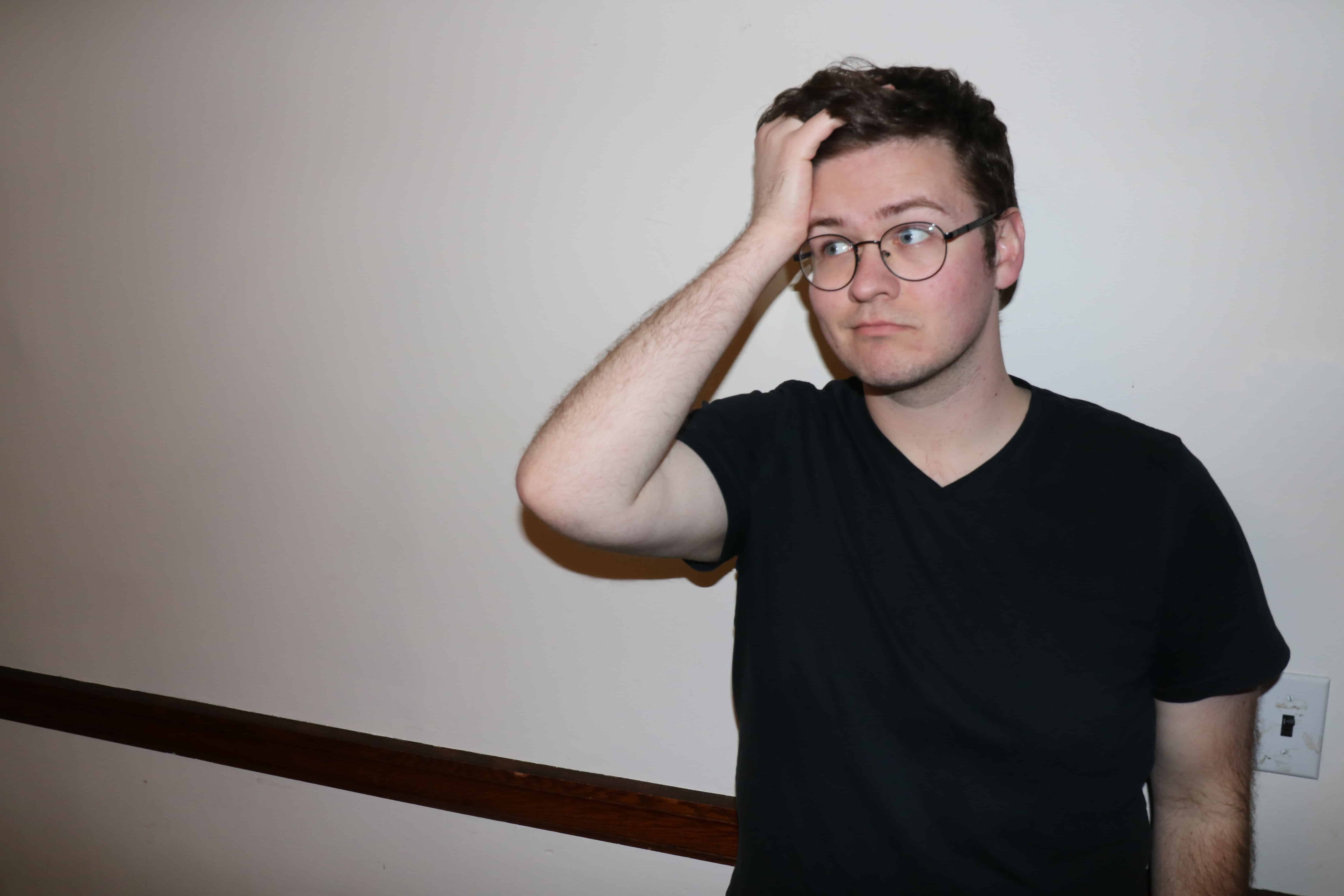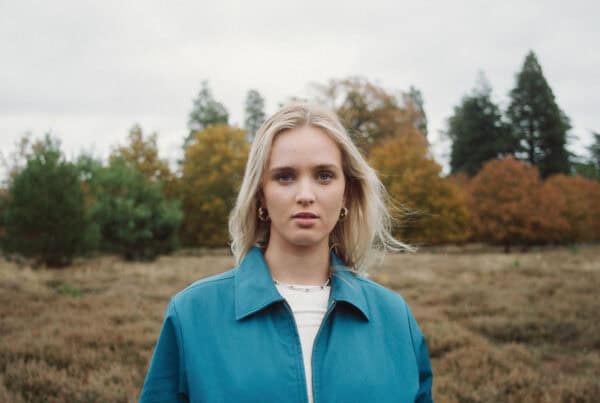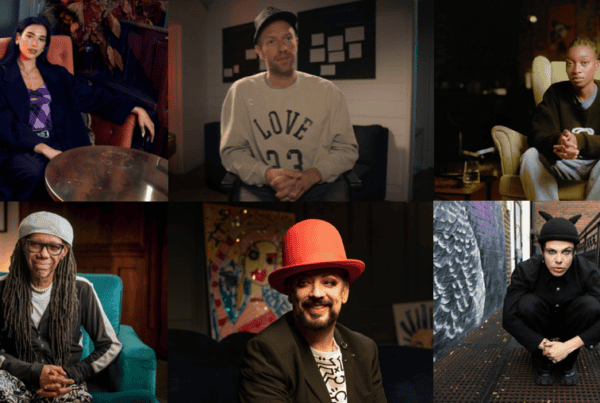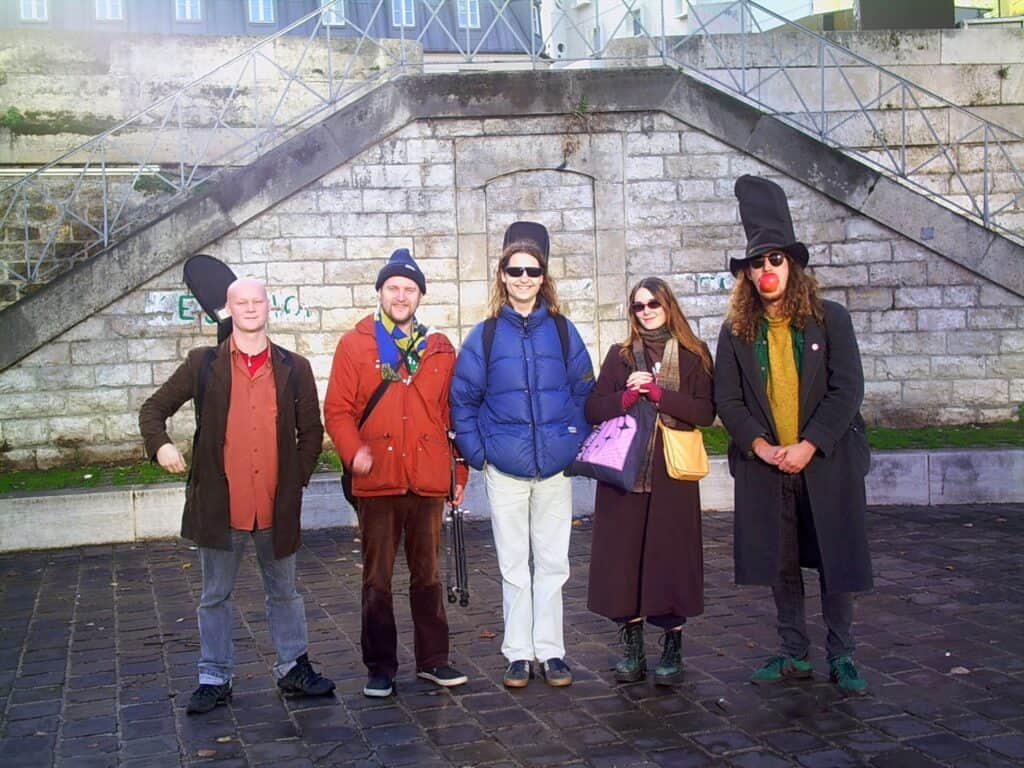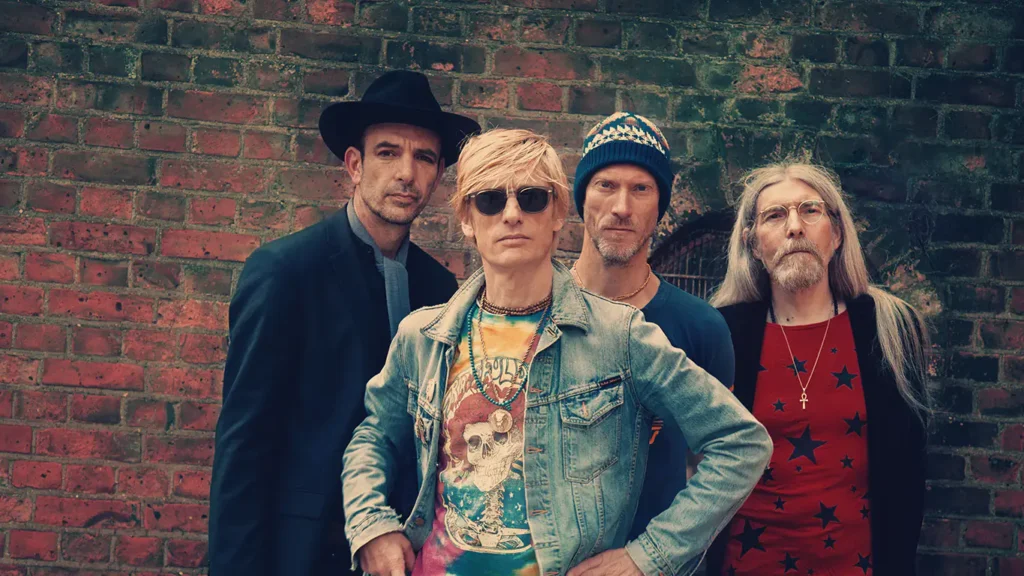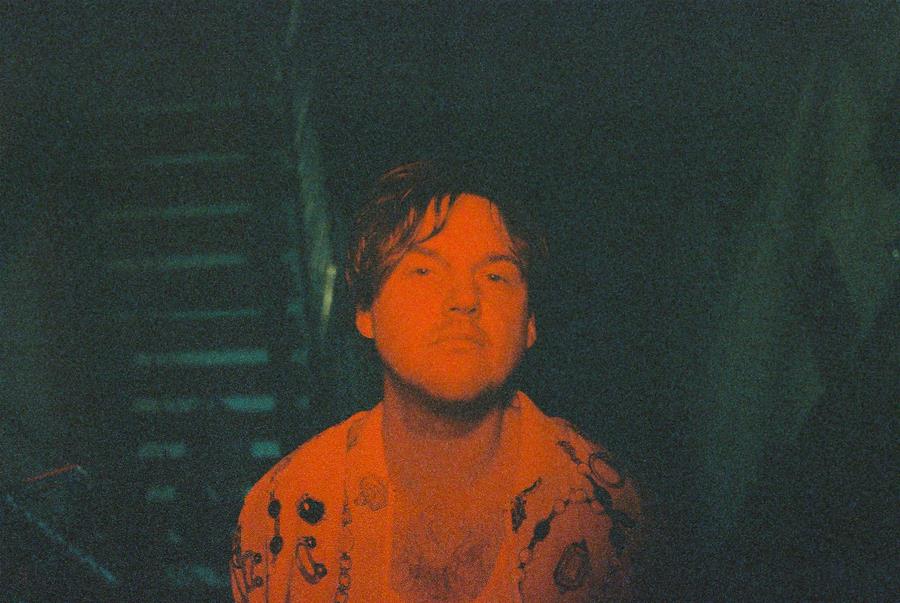Last March, just as everything was fully in the process of going completely to shit, I was on Day 9 of my hectic schedule of ‘laying around at home in various states of depressive terror accomplishing nothing except endless doom-scrolling’ when THE ALMIGHTY ALGORITHM – ALL PRAISE ITS BENEVOLENCE – recommended me something on a Carly Rae Jepsen AMV. It was a video essay entitled “‘Run Away with Me’ by Carly Rae Jepsen: The Best Pop Song of the Century” and, intrigued by the title plus my love of good music criticism (and also having nothing to else to do with those 12 minutes), I gave it a click. Whenever I find new channels recommended to me, especially on my console YouTube apps where the watch history is actively recorded, the first video I see gets two minutes max in order to impress – a decision made in effort to try and keep my recommendations from being crammed full of awful reactionary nonsense that works half of the time.
This particular video passed the test with flying colours. It was insightful and educational without being dry. It was entertaining with great edit timing and line delivery without coming off as try-hard or undermining the analysis. I came away from it feeling like I had learned something and immediately wanting to see more of this channel’s work. That channel’s name was Mic the Snare and the rest of their then two years of content did not disappoint.
The brainchild of Nick Canovas, an NY native and former award-winning university radio host, I soon found myself, especially as the year drew ever onwards, really properly anticipating his next upload, popping with tangible glee once one finally appeared in my feed in rather the same way I do for new Lindsay Ellis or Raycevick or Maggie Mae Fish. With the long-form case study essays, he brings that same mixture of approachable and understandable technical analysis with charming personability and sly wit present in the “Run Away with Me” video to topics as wide-ranging as examining the influence of The Black Eyed Peas’ monster The E.N.D., to the career suicide of Robin Thicke’s Paula, or the music stylings of K.K. Slider from Animal Crossing. With the monthly Quick Review Basheroos, he revives the spirit of the now-sadly-erased Here Lies Music – a short-lived 2015 YouTube channel that did comedic bitesized album reviews essentially as a piss-take against most forms of music criticism – but manages to tweak the format in order to provide genuine sincere critique without sacrificing the capacity for well-timed jokes. With the Deep Discog Dives, both ends of that spectrum come together to trace the history of a chosen artist’s discography.
But besides the high quality of those videos and the fact that we happen to share surprisingly similar taste in essay topics, what most struck me about Nick’s channel was how… “positive” isn’t exactly the right term since that indicates blind enthusiasm and Nick isn’t afraid to call it like he sees it; the QRB of Drake’s Dark Lane Demo Tapes consists entirely of a nervous laugh followed by a blunt firm “trash.” Rather, his work is passionate and genuine. Spend too long on YouTube, especially in the analysis and commentary side of things, and the endless deluge of hot-takes, RED IMPACT 48PT. FONT THUMBNAILS, and bilious rage/snark can just wear you the heck down, as anyone who dared to venture into the gaming spheres after The Last of Us Part II began rolling out can attest. By contrast, Nick’s videos remain constantly level-headed and earnest whilst often being delightfully idiosyncratic rather than being driven by THE DISCOURSE, the results being significantly more enjoyable and memorable as a result. I have come back to his video examining the once-totemic impact of ringtones upon the music industry multiple times in the four months since it was uploaded for exactly those reasons.
Clearly, and especially with *gestures to ongoing hellworld*, I haven’t been alone in desiring the kind of content Nick puts together. When I first found the Mic the Snare channel, it had only just cracked 10,000 subscribers. 10 months later, that number sits at nearly 85,000. With a new year on the horizon and what had started as a side project now having ballooned bigger than he’d ever thought possible, I caught up with Nick to talk about his creative process, how he’s taking the growth of the channel, and keeping a handle on mental health in the face of both a growing online profile and *gestures once again to ongoing hellworld*. With his permission, I have edited out the cumulative three pages where he spontaneously began quoting S Club lyrics for no apparent reason.
This interview has been lightly edited for length and clarity.
What inspired you to start a YouTube channel in the first place? Was it something you’d always been wanting to do or sort of a spur-of-the-moment deal that turned into something more?
To be completely honest, I had thought of starting a YouTube channel for about a decade. I remember buying a book written in 2008 about how to become successful on YouTube and read it on and off for fun. I looked at it again recently, and to see how YouTube used to look and operate was a wild trip. (Remember how you used to rate a video out of 5 stars?)
Me actually starting the channel was more spur-of-the-moment; I was a few months out of college in 2017 and having trouble finding consistent work. Around the fall of that year, Taylor Swift’s reputation came out, and it managed to claw itself into my mind – primarily because of the jarring disconnect between the “story” of the record, and the musical composition behind it. I remember going on a New Year’s cabin trip with my brother (an accomplished musician in his own right), and he and I just hashed out why it was such a peculiar record. When I got back, I wrote out my thoughts, set up an old camcorder, and made my first video.
So, I decided to finally start making videos – in part because of that trip, in part because I wanted to teach myself new skills like video-editing and graphic design, and in part because I didn’t want to keep wondering “what if” when it came to YouTube.
Before you had a YouTube channel, you did a lot of work on college radio, including DJ’ing an award-winning show. Did that experience holding down a radio show prepare you for on-camera YouTube?
That’s interesting, because the radio experience helped in ways I wasn’t expecting, but less so in the ways that I did expect. Having my own show on WUML (the student-run radio station at the University of Massachusetts Lowell) was my first real taste of music curation, assembling two hours worth of music on a weekly basis. It also helped me develop an understanding of pacing, which is such a nebulous concept and one you really only learn about when you do something like this over and over again. Plus, having friends and colleagues who were as into music as me was a phenomenal way to learn about new genres and artists.
All that said, I’d be lying if I said I could go back to those old shows and not cringe (and not just because of the dad jokes). I think the live nature of radio made me really anxious, and I can hear that so much when I go back and listen, even after doing the show for years. One of the best things about making videos is that I’m not constrained by what happens in the moment; I can get different takes, add things in after my first pass at recording and filming, and take breaks if I know I’m not in a good headspace. So, while I thought the public speaking aspects of radio would help (and they did to some extent), they ended up being less crucial than I expected.
How do you approach the Quick Review Basheroos when writing them? There’s a fine balance between humour and genuine criticism in each piece, so how do you decide that balance?
When it comes to writing one, it really depends on what I think of the album. As I listen to one, I’ll jot down thoughts on the record, and once I’m done, I’ll look over them and see which ones stand out. The two big things I try to nail with each are accuracy and brevity, which can be a really tricky balance to get right. Especially if I’m trying to make a joke too – then I’m writing something that gets a laugh but also properly conveys how I feel about an album.
One of the benefits of doing quick reviews as a package, as opposed to one-offs when I started, is that I can be more flexible with how I approach talking about individual records. For example, I can talk about one album in a more serious way because I know the next one I’ll cover with a joke or gag. I can say something early on, and then call back to it later when talking about another album. I can treat it as a full video with a complete arc, even though the components are very disparate.
On a similar note, it’s been interesting to see the Deep Discog Dives evolve from the QRB format but for one artist into a gradually more detailed, strait-laced and longer exploration of an artist’s discography. Was that a conscious decision or something that naturally occurred over time?
A mix of both. Back at the start of the year, I was still doing them as an extension of the QRB. Then when the Steely Dan DDD dropped, I was really surprised at how many people suddenly discovered it and had suggestions for artists to cover. I started a poll to allow them to choose who would get covered each month.
That was the first thing that eventually led to the DDD changing, though from there it was definitely more of a natural progression. I just began wanting to talk more about these albums than the ones I cover in QRBs, and I realized doing so allowed me to tell a full story about an artist – their upbringing, their influences, how their lived experiences shaped the music, etc. That wouldn’t be possible if I was talking about each record for a max of 30 seconds.
How do you approach including conversations about music theory, production details, and engineering minutia into your videos in a manner that’s approachable for the novice viewer without diluting the analysis/critique?
The main principle I try to follow is that, no matter what technical stuff I throw in, it should always come back to the music and how it makes you feel. That was one of the big things I set out to do with my channel. Oftentimes, when I’ve watched more theory or engineering-centric videos, I’ve been left with a feeling of “…okay, but why does that matter?” Which is not to say any of those videos are bad – they can be great for learning or being introduced to a new concept. It’s just not how I would go about doing them. A song can use nifty theory tricks or have an auto-panned hi-hat with a chorus effect (the BEST mix move), but if they’re not enhancing what the song is trying to convey, then what’s the point?
The channel’s grown quite significantly over the past year, in both subscribers and average view count. How do you process that? This obviously isn’t the first time you’ve received a sudden spike in popularity (when your video on “So Bad It’s Good” music blew up), so has your reaction to that changed from the last time? Is it scary, humbling, exciting, other emotion-based adjectives?
It’s certainly been some kind of emotion-based adjective! Like you mentioned, the first boost from the “So Bad It’s Good” video prepped me to some degree for this upspring in growth. It’s interesting, though; when that happened, that video was about a year old. So people were being introduced to me via a video that didn’t really represent me by that time, y’know? I saw people criticizing my setup and room, and I was like “That’s not how it is now!” I’ve learned that we don’t often get to choose how our work is presented to the world. Thankfully, the videos that garnered attention this year – the “Music That Defined the 2010s” and the Glee videos – are far more representative of me as a creator.
In terms of processing, it definitely comes in waves. Some days it feels very overwhelming and I feel like quitting everything and moving to the mountains, and other days I feel like I’m top of everything and the greatest creative individual who’s ever existed. I’ve tried to accept that those fluctuations are part of the creative process.
Going along with that, has the increasing popularity and attention changed your attitude towards video creation at all from when you started? Both in how you decide on what to cover, and how you treat the act of video-making in general?
It depends on the series. The QRB is mostly determined by whatever gets released – I’ll try to listen when someone has a record they want to recommend me, but whether it gets into a QRB depends on if I have anything to say about it. The longer Examining videos are predominantly topics that I want to cover, but there have been cases where what I want and what the audience wants come together. My most recent long video on Hyperpop is one example, I think someone suggested the topic in my IG DMs. (I’m also working on one now that has been heavily requested, but that one’s gonna take a bit…) The DDD I’d say is the one that’s changed most due to viewer feedback and input, not just in terms of who I cover but also how it’s presented. I think it’s a benefit of having three series on my channel, that my audience and I have a certain amount of influence depending on what the series is. With any video I make, I’m hoping that both my audience and I get something valuable out of it – for me, learning about a new topic or honing my editing/writing/general presentation, and for them, a new perspective or even just taking their mind off what may be going on in the world.
How do you deal with burnout and mental health? You took a break in late September for about a month and a half after keeping up a rather consistent schedule for at least the prior year. How did you come to that decision and how was the time away?
To be 100% honest, I’m still figuring that out! Backing up, I had been thinking about taking a break as early as July. I had finished the Glee video and my day job was ramping back up because COVID was (at the time) dying down. I think it was after the August QRB that I realized, “I absolutely need a break.” The hiatus ended up being perfectly timed, because I started a new job during my break and it wouldn’t have been fun to learn the ropes at a new place while balancing video making. So, the time away was good, and to be back in it has been good in its own way. That said, I don’t think the schedule I kept for most of 2020 – three videos a month, one of each series – will be sustainable in 2021. I have certain plans in mind that I’ll likely announce in January right before my first proper video of 2021. One of my goals for the new year is to find a schedule that allows me to make high-quality videos in each series, while maintaining a day job and social life and all that jazz.
How have you personally been doing throughout this year, in non-video-making capacities? Your break announcement video in September mentioned that you’d managed to mostly deal with everything until the weight of *points to the metaphorical flaming ball of trash outside* crashed down on you.
Thank you for asking! I was very fortunate earlier this year – the day job I had for most of 2020 entailed work that couldn’t be done from home, but I was able to stay home and do office work for most of the spring. However, once the summer hit, I was back out and that added this undercurrent of stress to most of my workdays. (I’m almost entirely remote these days.)
Looking back, aside from work and MTS (which took up massive chunks of my time), it’s been a fairly quiet year for me. I think the biggest thing outside of work or videos was I learned how to make coffee with a French press; I had never learned even though I’m an absolute coffee fiend. Though I’m also really happy that I’ve been able to have a quiet year – that is not a luxury that everyone has right now.
What are your goals for the channel going forward? Is there a level of growth or internet fame you’re aspiring to/wanting to avoid, or is it more “keep going til it stops being fun?”
My initial goal was to use the channel as a portfolio piece and end it once I was hired to do similar work somewhere. When I made that goal, however, I did not expect to have grown this much. There are certain things I want to do when it comes to the channel and upping the production. In fact, one of my goals at the start of 2020 was to get a proper studio space to film and work on videos. Unfortunately, because of *hellworld*, I won’t get to do that (or at least feel comfortable doing it) until well into 2021 at the earliest.
Because of that growth, I really don’t have a concrete answer for what I aspire to. For me personally, I feel like the channel is at its best when I’m really engaged with a topic and that energy shines through. My hope is to continue seeking out those topics and make myself a more well-rounded, educated music enthusiast. I also have ideas for other MTS-related projects, but it’s probably best if I hold off on details for now.
What are some artists or albums you heard this year that you feel are underrated and would like to big up for folks to check out?
I’ll shout out the underrated albums I listed in my Best of 2020 Awards video: Giver Taker by Anjimile, Live Forever by Bartees Strange, Fake It Flowers by beabadoobee, Sideways to New Italy by Rolling Blackouts Coastal Fever, and Cape God by Allie X. I’ll also mention DJ Sabrina the Teenage DJ’s Charmed – it’s a 3-hour long dance/mashup record, like if the Avalanches’ Since I Left You was soaked in 90s nostalgia. I think Ryan from the YT channel NotRealMusic was talking about it on Twitter, and I’m really happy I looked it up. It’s been really good music for working and researching.
Words: Callie Petch.

